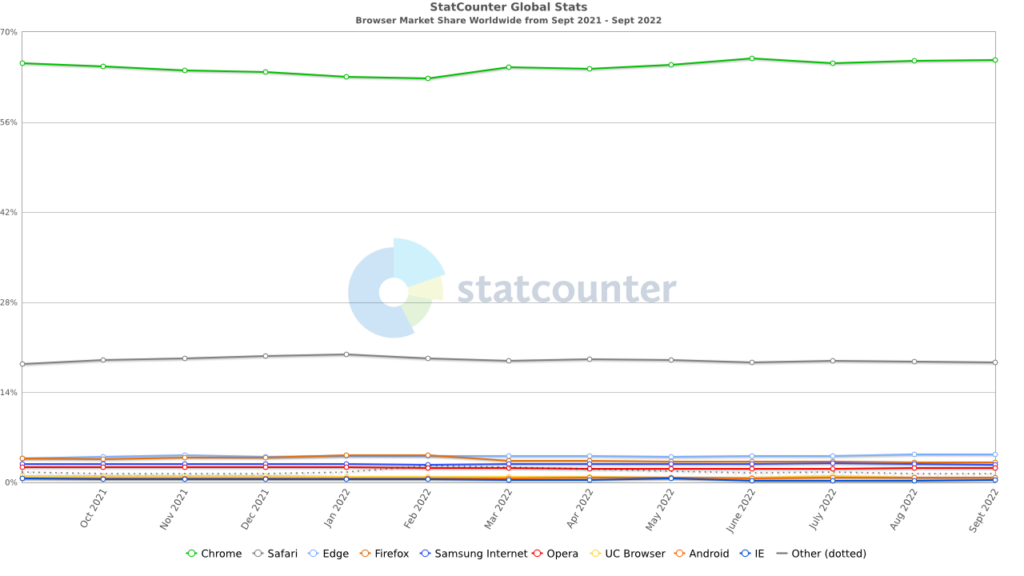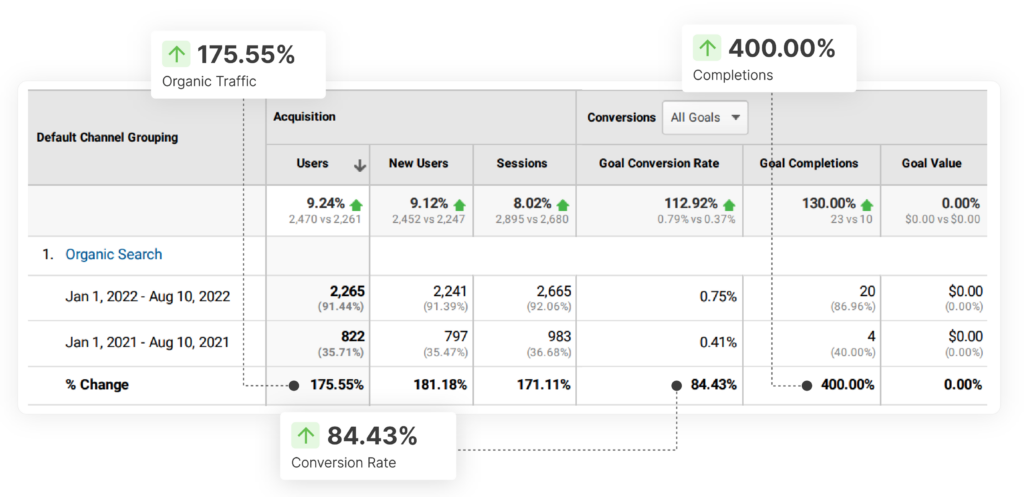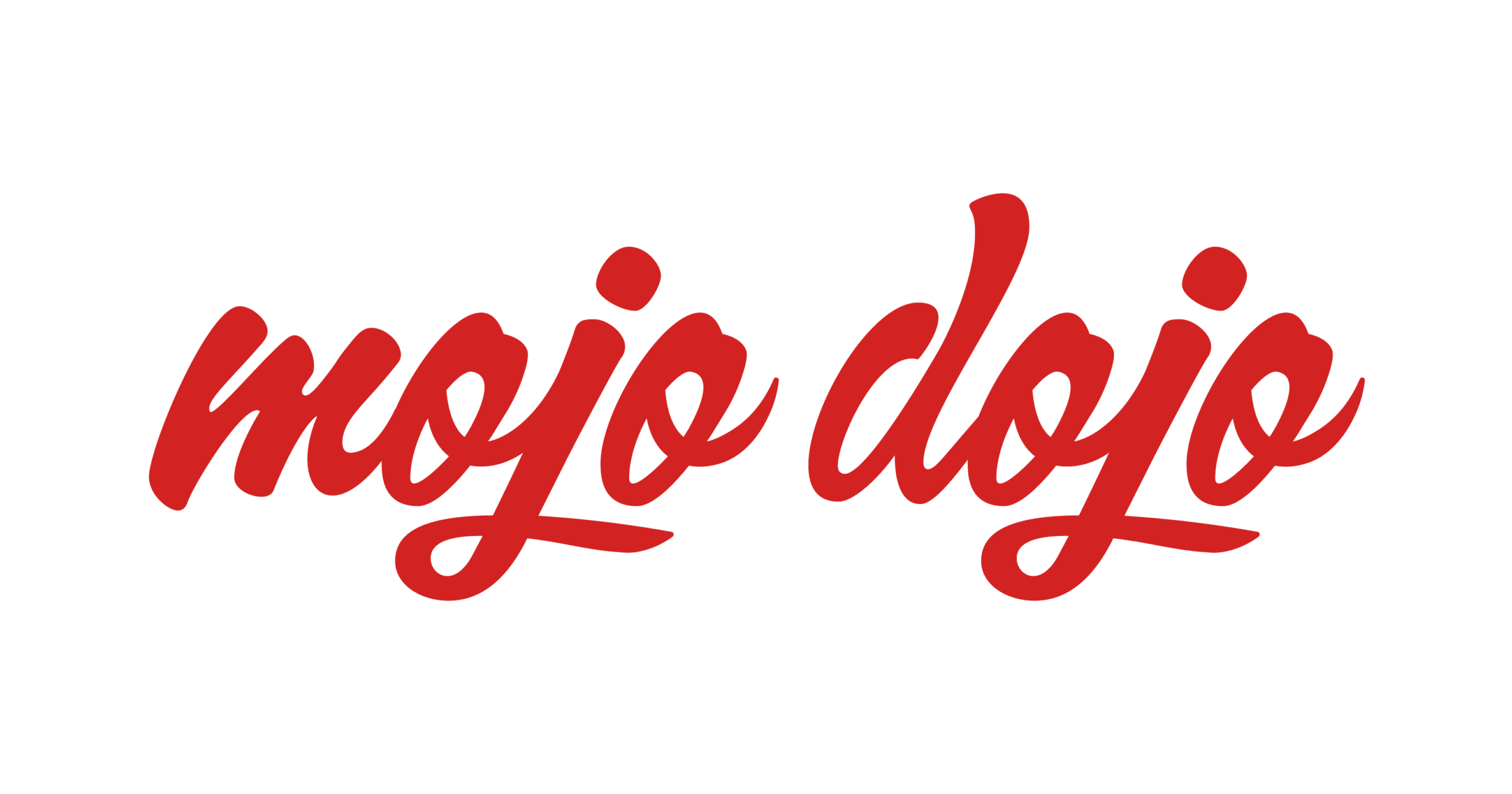Content marketing is a strategic marketing approach focused on creating and distributing valuable, relevant, and consistent content to attract and retain a clearly defined audience.
By providing high-quality, informative, and engaging content, businesses can build trust and credibility with their target audience, ultimately driving profitable customer action.
Content marketing can take many forms, including blog posts, social media posts, videos, podcasts, e-books, whitepapers, and more. When done effectively, content marketing can help businesses establish thought leadership, generate leads, and drive conversions, all while building a loyal community of customers and advocates. By prioritizing the needs and interests of their audience, businesses can create a content marketing strategy that resonates and delivers long-term results.
People are spending more and more time online, with phones making the internet accessible almost everywhere you go.
- There are 4.59 billion social media users worldwide
- YouTube has 2.6 billion monthly active users
- 8.5 billion Google searches every day
According to a report by search market share, Google has a 92% share with Bing being the close second.

You can provide valuable, relevant, and consistent content in a way that resonates with those that matter.
By applying strategic thinking to your approach, you can provide true value and information to your audience.
You’ll be better equipped to break through the noise and the overwhelming amount of content that is available online.
- Consumers are looking for content they can connect, engage and benefit from
- 59% of consumers feel like companies have lost touch with the human element of customer experience
- 78% of consumers believe that brands that produce custom content are interested in building relationships.
What is content marketing?
Content marketing is the method of creating high value, contextual, valuable content for clearly defined audience with the intent of getting the users to take a desired action.
The desired action or conversions could be form fills, phone calls or sales online.
Think of it as captivating storytelling.
Storytelling that gives your target audience what they’re looking for – in an authentic and engaging way.
It involves planning, creating, publishing, and repurposing content across many channels.
And, in doing so, you capture your audience’s attention no matter what or how they are showing up online.
Gone are the days of outbound marketing techniques, where a company tries to ‘push’ its brand out to the world.
Some examples of outbound marketing techniques include:
- Television & radio advertising
- Cold calling
- Flyers/catalogue mailbox drops
- Billboards
- Event sponsorship
Consumers are starting to see these techniques as invasive and disruptive.

On that note, spell check is also important.
They would prefer your marketing efforts to be more natural and genuine.
This is where inbound marketing comes in. This method involves drawing potential customers to you instead.
The goal is to create content that aligns with the values of the audience and inspires them to take action.
You need to do more than just publish blogs or post on social media in the hope that sales will start rolling in.
It can be easy to fall into a trap of sharing content simply to tick a box, or because it’s what everyone is doing.
Another common mistake is sharing content without considering what the target audience want.
Valuable
Your content must serve an unmet need of the buyer. Try to provide content that:
- Provides critical information the buyer is looking for
- Offers the steps to walk them through a complicated process, or
- Provides tools and resources to help solve a problem for them.
Relevant
Your content should align with what your audience is looking for and interested in. If you focus on creating content that you think they want, without research, you’re likely to fail.
Consistent
Companies that offer valuable, quality content on a regular basis are going to see results. Not only should you publish and post consistently, but ensure your messaging and look/feel are consistent as well.
Types of content
The types of content you create and where you publish it will depend largely on
- Your purpose and goals
- Your target audience and buyer personas
- Your budget
It’s great to have a one type of content your brand is amazing at creating, as it likely to be of high quality. However, there’s huge value in varying the types of content you create.
If you were to use only one or two types, you would be limiting your potential exponentially.
Benefits of using different types of content
There are many benefits to using different types of content in your content marketing strategy. We’ve outlined the most significant below.
Helps you scale
It is much easier to scale your efforts when you have a variety of content that you can create, reuse and repurpose.
For instance, you could use key information from a blog to create an infographic or instructional video.
Benefits your audience
Each individual within your target audience will consume content in different ways.
Some will enjoy video content while others will prefer written blogs or case studies.
It also applies to where you can reach your audience. Some will use social media regularly while others may not.
By creating different types of content you can reach and meet the needs of more of your target audience.
Helps with audience research
Monitoring the engagement or reaction of your content will shine a light on what works and what doesn’t.
Not all your efforts will work or produce results. And, in reality, the preferences of your audience will change over time. When you gain these insights, you’re able to improve your content strategy and your SEO.
Some examples of content and channels you can use in your marketing strategy are:
- Social Media
- Website & Blogs
- eNewsletters
- Video content
- Podcasts
- Courses, webinars & eBooks
- Reports
- Press releases
- Influencer content
As you can see, there are many ways to reach your target audience and include them in telling your brand’s story.
But make sure you pick the right ones!
Why is content marketing important?
Content marketing is important if you want to see your business grow and succeed.
It helps you to:
- Answer the questions your target audience have
- Build trust and reiterate expertise
- Improve conversions
- Generate leads and sales
It will outperform traditional marketing techniques and provide conversions at a fraction of the cost.
Here is an example of an ecommerce store that excelled at content and increased their traffic by 175%

There are considerable benefits that are worth noting:
- Increase brand awareness
- Show potential buyers what you can offer them
- Educate your audience on industry-related topics to show expertise and build trust
- Create engagement and build relationships with your audience, creating a sense of community
- Reiterate the benefits of your product or service and how this will help your audience
- Increase your conversion rate (e.g., building your database or increasing your sales)
Your content marketing strategy is like your roadmap to success. It will outline exactly what you need to create, where you will publish it, and when.
And it’s all based on attracting, attaining, and engaging with prospective customers and clients.
By implementing a content marketing strategy, you’ll see a more engaged community that is built on a foundation of trust.
Content Marketing for the Buyers Journey
There are three stages a potential buyer goes through when looking to buy a product or service.
The awareness, consideration, and decision stages.
This is the buyer’s journey. Understanding this process is key to producing quality content that converts.
Think of the last time you bought something. No doubt, you started with the realization you had a need and then started researching.
Most people will not jump straight in and buy the first solution they find.
Put your target audience at the forefront
Every business owner knows their products and services inside out, and are often extremely passionate about them.
But that doesn’t mean they’ll speak about it in a way that resonates with or captures the attention of their target audience.
You need to ask yourself what questions and content the buyer will be asking and looking for.
Not only when they are about to buy, but, at each stage of the journey.
You can then create pieces of content that will help them through their buyer journey.
You’re aiming to get your target audiences’ attention.
You should provide the value and insights they are looking for, relevant to the stage of the process they are at.
By publishing content on as many different content channels as possible, you’ll be in a much better position to gain their attention.
You need to be considering keywords and phrases to focus on, for all stages of the buyer journey.
This will ensure your content appears in Search Engine results, as this plays a large part in the process.
Content for the awareness stage
During the awareness stage, the buyer first realizes they have a problem or need.
They will start to gather and look for more information to clarify what it is they’re trying to solve or achieve.
Asking the following questions will give you ideas for what you need to be include in your content, for this stage:
- “How do buyers describe their problems?”
- “What are buyers looking for to educate themselves on this topic?”
- “What are the buyers desires and goals?
For example, a pet owner may want to give their pet a healthier lifestyle but are not sure how to do so.
They will be looking for the ‘what, how, when, where, and why’ relating to this topic.
They may search for “how to give my pet a healthy lifestyle”.
A business owner may want to market his business to other businesses.
This is a classic example of B2B marketing.
At these stages, you should be trying to educate the buyer and show expertise, rather than sell to them.
Your content needs to show your brand as knowledgeable, trustworthy and, ultimately, one that can solve their problems
The types of content that you should share for the awareness stage include:
- Educational blog posts
- Articles & Reports
- Search Engine Marketing & Ads
- Infographics
- How to Guides and videos
Content for the consideration stage
At this stage, the buyer has a much better understanding of their problem or need.
They’re now looking to dig deeper into possible solutions and options.
They’ll be looking for information to narrow down products or services that will suit their needs.
They want proof of the stated benefits of each solution.
This stage of the process is crucial as it is when the buyer decided whether your brand will make the list, or not.
You should still avoid focusing on selling at this point. Instead, focus on their problem and how your brand will solve it.
Questions at this stage should be:
- What key topic/s is the reader looking to educate themselves on?
- What is their most important concern right now?
- What other options and solutions could they be considering?
Using the pet owner example, they have now discovered all the different ways you can offer a pet a healthier lifestyle.
They’re now looking to learn more about providing a nutritious, balanced diet for their pet.
The best types of content to offer at this stage could include:
- Case Studies
- Reviews & testimonials
- Product demonstrations
- Downloadable resources
Content for the decision stage
At the final stage of the journey, the buyer is ready to make a decision.
They’re looking for the final information to decide which brand or company they will buy from.
This is arguably the most important and valuable stage of the journey. It will be your final chance to convince them to choose your product or service.
The aim of the game at this point is to win the buyer over. Get them to believe you are the best option for them, in a simple and easy-to-understand way.
To do that, you should ask yourself the following questions, and provide content that will solve them:
- What reservations or concerns could the buyer still have?
- How does my pricing/offer stack up against my main competitors?
Coming back to the pet owner example, this is where they decide which brand they will buy from.
They have found some companies that offer nutritious, balanced pet food and are now looking at the options in detail to help them make a decision.
To help in the decision stage, the best types of content to share are:
- FAQ’s
- Free trials, targeted offers & discounts
- Customer success stories
- Product landing pages
- Detailed product Information
- Competitor comparisons
How to implement a content marketing strategy?
Many companies around the world are using content strategies to increase their ROI.
- 82% of marketers actively use content marketing. (HubSpot State of Marketing Report, 2021)
- Over 60% of marketers measure the success of their content marketing strategy through sales. (HubSpot State of Marketing Report, 2021)
Whether you are launching a new product or service, or have an existing brand, it’s never too late to make a conscious effort with content marketing.
It’s a good opportunity to evaluate where you are at, what you want to achieve, and how you’re going to do that.
It will also help you gain a better understanding of your goals, your target audience and how is best to nurture relationships with them.
It’s likely you’ll find creating content starts to come easily and more naturally as you work through this process.
We’ve listed the steps that you should take to create a content marketing strategy for your business below.
Set goals and KPIs
The first step in creating your content marketing strategy is to document your overall purpose and goals.
If you and your team don’t know what it is you’re trying to achieve, how can you expect to achieve anything?
After documenting your purpose and goals, it’s time to figure out how you will measure them.
Establish SMART goals that align with these and relevant KPIs for each.
SMART goals are:
Specific
Define your goal in a clear and easy-to-understand way.
Measurable
You must be able to measure the results to track progress and make changes when necessary.
Attainable
Don’t set the bar too high! Your goals should be realistic and achievable within a certain timeframe.
Relevant
Your goals should align with your values and long-term business objectives.
Time-bound
You should always set realistic time frames for your goals.
For each goal, set KPIs – Key Performance Indicators. This gives you the ability to keep an eye on your performance and ensure you are on track to achieve your goals.
Depending on what your goals are, there are several different measurements you can use to keep an eye on your progress.
Some examples are below:
| SMART GOAL | KPI |
| Increase brand awareness | Website visitors, social media followers, |
| Achieve x% of sales | Website sales |
| Build community engagement | Comments, mentions, FB group members, shares. |
| Increase brand loyalty | Returning customers, reviews & testimonials |
Determine and set your target audience/s
This step is crucial in creating content that produces results.
If you don’t know who you’re targeting, it’s like creating content for everyone in the hope it resonates with someone.
The messaging will be too broad and you risk your content going unnoticed and ignored.
This is a sure-fire way of wasting your time and money.
Your target audience is the defined set of people you want to connect and engage with. Your ideal group of customers that you want to buy your product or service.
This could be more than one group of people but avoid having too many as it can cause confusion.
Once you have decided on the audience/s, create profiles that include their:
Demographics
Their ages, genders, locations, income levels, family status, etc.
Psychographics
Their attitudes, aspirations, and other psychological criteria such as values, interests, and lifestyles.
Behaviours
This relates to the behavioral patterns of the audience. Especially when it comes to the decision-making process, and how they behave and engage with brands and content.
Creating target audiences or buyer personas gives you a snapshot of the type of people you are trying to connect with.
They will tend to have characteristics in common that you can group together. Although they aren’t all the same – the similarities are enough to be able to speak to them as a whole.
By understanding their fears, pains, wants, and needs, you can create tailored content for them.
Decide on type of content and content channels
Next, you need to decide which content you want to share and where. Think about your target audience and their pains, problems, dreams, and desires.
Now, think about the types of content you can share that will resonate with them, no matter what stage of the buyer journey they’re at. You want to show them how you can:
- Reduce their pains
- Solve their problems
- Achieve their dreams
- Fuel their desire
Once you have decided on the types of content you will produce, think about what channels you will share and publish the content to.
There are so many options to get in front of each audience. Think about where your audience tends to ‘hang out’ or research products and services, and focus on those.
Your website will be like your main content hub. This is where you can share company, product, service, and contact information, as well as blogs and resources.
You can then use other channels to repurpose this content and reach even further.
When it comes to social media, it pays to think about which platforms you want to use to create your brand presence.
Each one has different users and purposes, so some may not be a good choice for your brand.
For example, if your target audience is men aged 50+, then Tik Tok may not be the best channel for you to use.
If you don’t pick your channels with your target audience in mind, you may see little results.
You’ll be spending a lot of time creating interesting and relevant content, with little to no ROI.
We have noted the user characteristics of some of the main social media platforms below to give you an idea:
| TIK TOK | ||||
| Purpose | Wide range of purposes including sharing pictures, opinions, articles. | Professional networking & career development | Photo sharing app to connect with people. | Short form video sharing app |
| Largest age group | 25 – 34 | 25 – 34 | 18 – 34 | 10 – 19 |
| Gender split | 43% F / 57% M | 48% F / 52% M | 48% F / 52% M | 61% F / 39% |
If your target audience were 18-year-old females, then TikTok would be one channel to make a concerted effort on.
Set your budget
This step is important. The last thing you want to do is plan out some beautiful, engaging content, and hit a wall when it comes time to create.
Think about how much you can spend in total, and how much you may need for each content type you have chosen. You’ll need to think about the following:
- What tools will you need to create and publish content?
- Will you need to run ad campaigns on specific platforms?
- Will you be paying for content/copywriters to write your blogs or create social media content?
- Do you have enough quality images, or will you be hiring a photographer?
There’s a lot that you need to consider to implement your content strategy successfully. A lack of budget may mean you need to reassess or re-evaluate your current plan.
If there are budget constraints, you may need to stagger certain parts of your campaign to ensure the best ROI.
Create and distribute content
This is where the magic happens. All the planning you have done so far leads to this step – creating and distributing your chosen content.
Whether you are creating the content yourself or you’ve decided to hire external help, you should use a content planner or calendar.
This will help you to stay consistent and aligned with your strategy.
You can use this to outline what content types you are going to share over a given period (e.g. annually or quarterly), making it clear to everyone on your team what is required (imagery, event details) and created well ahead of time.
It also helps to:
- Stay consistent and on brand
- Schedule content ahead of time
- Ensure key dates, events, and milestones are not forgotten about
- An easy place for everyone to access drafted and approved content
Measure and Analyze
As mentioned earlier in the article, measuring and analyzing your results will ensure you are aware of your progress. This allows you the chance to make any necessary changes to get you back on track.
You can track performance using a few different methods, depending on your SMART goals and KPIs:
- Consumption metrics like open rates, time on page
- Sharing metrics like social media shares
- Lead or Sales metrics like form fills, phone calls or sales
- Lifetime value of deals or leads generated from these content marketing efforts
It pays to ensure you do this on a regular basis so you can recognize any issues and allow yourself time to make the necessary changes to your planning.
Improve and Scale
Take the time to study the results, as they are happening. This will give you the opportunity to determine if things are working and make some changes.
Or, even better, embrace and expand on content that is proving to be a real hit with your audience.
There is no point in continuing to create content if it’s not resonating with your audience. It’s a massive waste of your time and resources and you will gain nothing.
You may need to shift your focus from creating eBooks to producing more e Newsletters.
Or, you might look to reduce the number of blogs you are publishing and focus on your Facebook community instead.
Whatever is achieving the best results is what you need to be focusing on.
